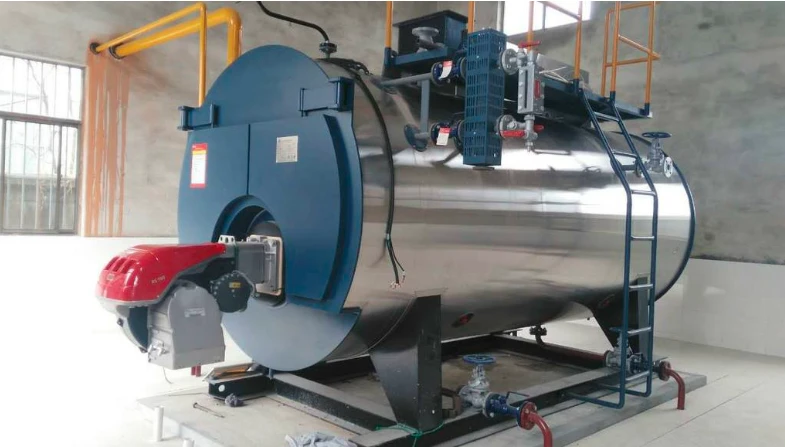
অক্টো. . 13, 2024 23:28 Back to list
how does a coal fired boiler work
How Does a Coal-Fired Boiler Work?
Coal-fired boilers are used in various industries to generate steam or hot water for heating and power generation. Despite the growing emphasis on cleaner energy sources, coal remains a significant fuel due to its abundance and cost-effectiveness. Understanding the operation of a coal-fired boiler can provide insights into its efficiency and environmental impact.
At the heart of a coal-fired boiler is the combustion process. Coal is fed into the boiler's combustion chamber, usually in pulverized form, to ensure efficient burning. Pulverization involves grinding coal into a fine powder, which increases the surface area and promotes a more rapid and complete combustion. The pulverized coal is mixed with air and blown into the furnace where it ignites, producing heat. This combustion process generates a high-temperature flame that can reach up to 1,400 degrees Celsius (2,552 degrees Fahrenheit).
How Does a Coal-Fired Boiler Work?
To maintain efficiency and minimize emissions, coal-fired boilers employ several technologies. One common method is the use of air preheaters, which capture exhaust heat from the flue gases and use it to preheat the incoming combustion air. This not only increases the efficiency of the boiler but also reduces the amount of coal needed for combustion.
how does a coal fired boiler work

Another important aspect is the control of emissions. Modern coal-fired boilers are equipped with emissions control technologies, such as electrostatic precipitators (ESPs) and scrubbers, to remove pollutants from the flue gas before it is released into the atmosphere. ESPs effectively capture particulate matter, while scrubbers help remove sulfur dioxide and other harmful gases.
Despite these technologies, coal-fired boilers face significant challenges regarding their environmental impact. The burning of coal releases greenhouse gases like carbon dioxide, which contribute to climate change. Moreover, the extraction and transportation of coal can also have detrimental effects on ecosystems.
In response to these environmental concerns, there is ongoing research and development aimed at improving the sustainability of coal-fired boilers. Innovations such as carbon capture and storage (CCS) technology aim to capture the carbon dioxide produced during combustion and store it underground, reducing its impact on the atmosphere.
In conclusion, coal-fired boilers play an essential role in energy generation and industrial processes. By understanding how they work and the technologies involved, we can make informed decisions about their use and explore alternative energy sources. The transition toward cleaner energy systems may reduce reliance on coal, but it is crucial to address the existing infrastructure and the energy demands of various sectors while considering environmental implications.
-
Best Steam Boiler Design PDF Free Design Calculation & Diagram Downloads
NewsJun.10,2025
-
Hot Boiler Water Heater Efficient Heating Solutions for Home & Commercial Use
NewsJun.10,2025
-
Steam Boiler Safety Devices High-Quality Protection Valves
NewsJun.10,2025
-
Ultimate Steam Boiler Checklist for Safety & Efficiency
NewsJun.10,2025
-
Optimal Hot Water Boiler Temperature Setting Guide
NewsJun.10,2025
-
Effective Hot Water Boiler Chemical Treatment Protect & Maintain
NewsJun.09,2025
Related PRODUCTS






















